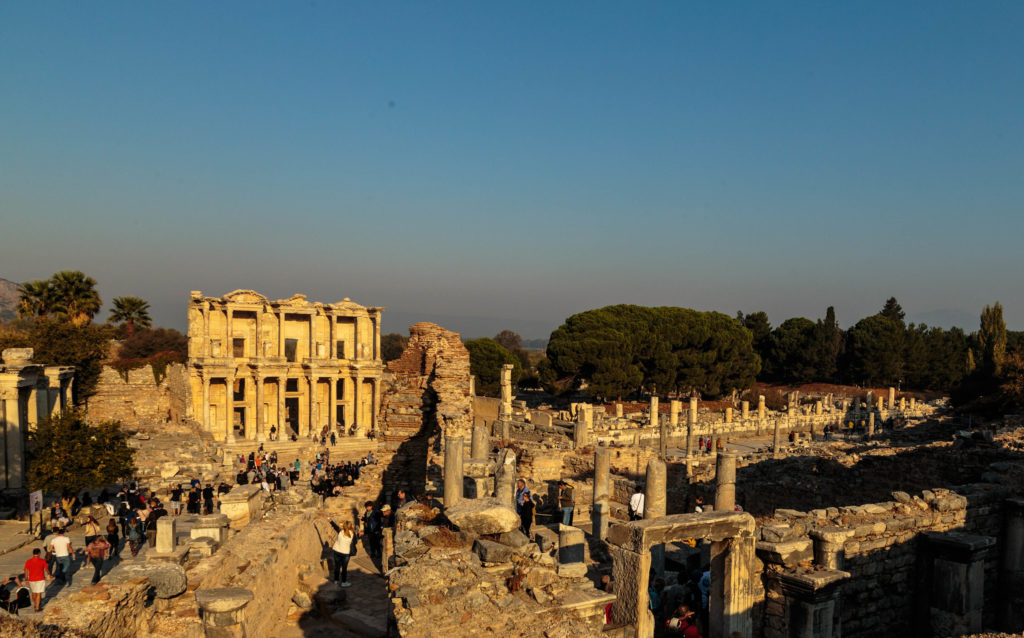
Ephesus – Selçuk, Turkey is a place where time doesn’t go forward. Only 10% of Ephesus has been excavated, and the untouched details of the ruins take your imagination back to the 11th century BC. You can truly feel how people lived in the city back then when you visit the communal public baths, with its latrines packed close together. If you look at how huge the agora or market area is, you can imagine how important trading was to the city. And with temples often coming into view, and the cementery for gladiators who fought to entertain an ancient audience, you will feel as if you really traveled back in time.
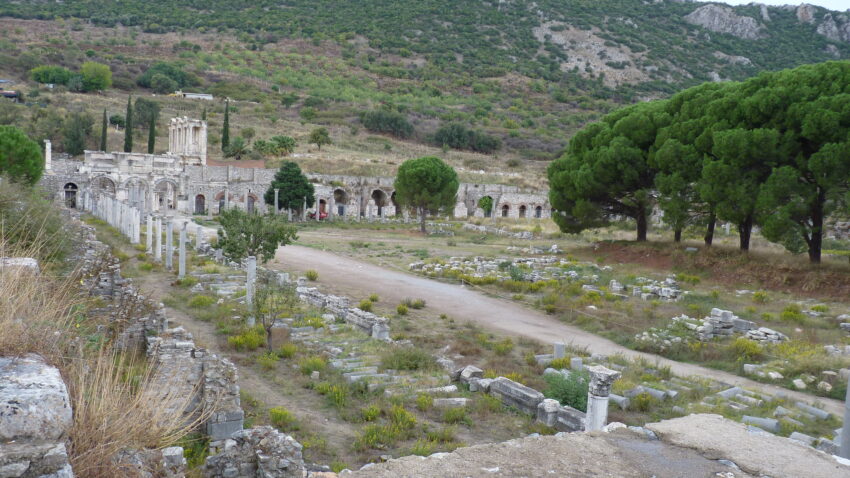
Even though hundreds and hundreds of years have passed since Ephesus was founded, these ruins are now considered the best preserved of any Roman site.
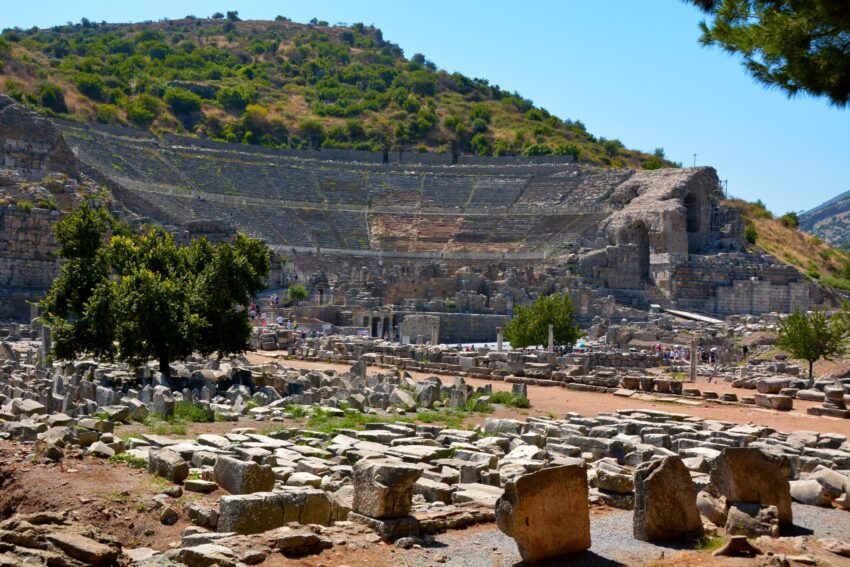
Source by Harold Litwiler on Flickr – Under Creative Commons license
Activity/Place Highlights
The Great Theater of Ephesus
You find the ruins across the slopes of two hills, with two level sites inside connected by the Steet of Curetes. On the lower site, near the ancient harbor, stands the Great Theater of Ephesus, an amphitheater with a capacity of 25,000 people. And even though it may sound crazy, they continue giving concerts nowadays. Just ask if there is any special concert or event during your stay.
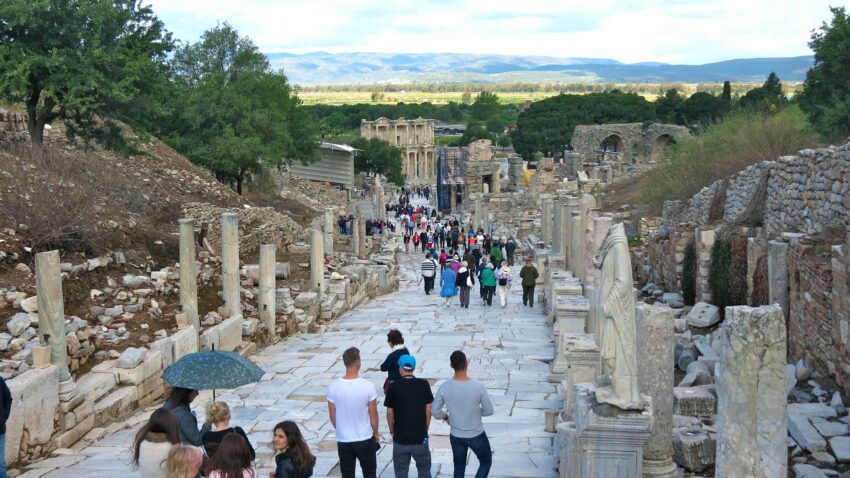
Source by Erik Cleves Kristensen on Flickr – Under Creative Commons license
The Library of Celsus
On the same level, you can visit the most impressive ruin at Ephesus: The Library of Celsus, with its spectacular views at sunrise. What remains from this building is the front façade with its entrances, statues, and windows, and two stories of towering pillars. The perfect strategy they used to build the Library will definitely catch your eye, with precise techniques to manipulate your perspective. When you look at the building from ground level, it looks much larger than it originally is.
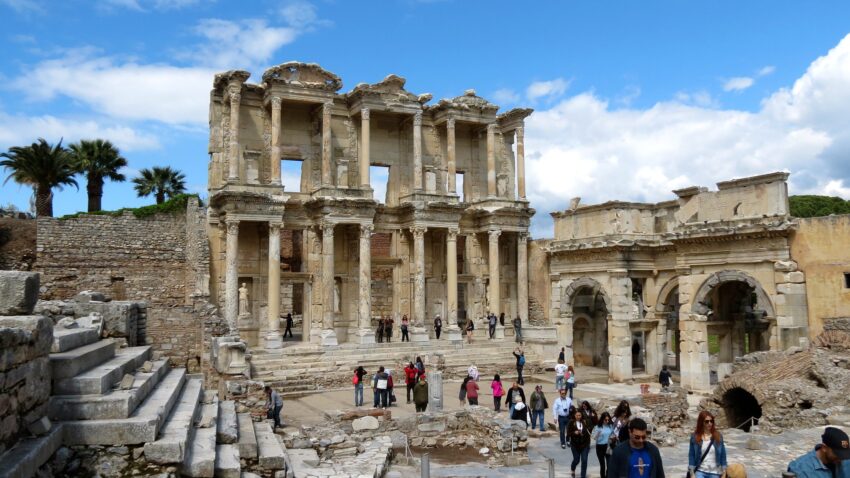
Source by Erik Cleves Kristensen on Flickr – Under Creative Commons license
The Ephesus Museum and The Terrace Houses
There are many more highlights from the city, like the Ephesus Museum, with its collection of statues and relics. The Terrace Houses, which were the houses of the rich during the Roman era, are another popular attraction. To visit the Terraces you’ll have to pay some extra money, but it’s totally worth looking at the mosaic and frescoes.
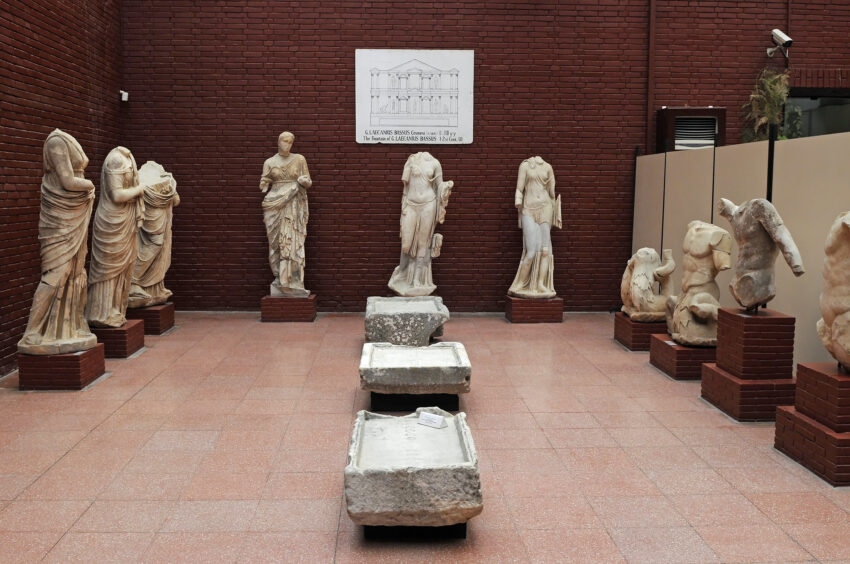
Source by Son of Groucho on Flickr – Under Creative Commons license
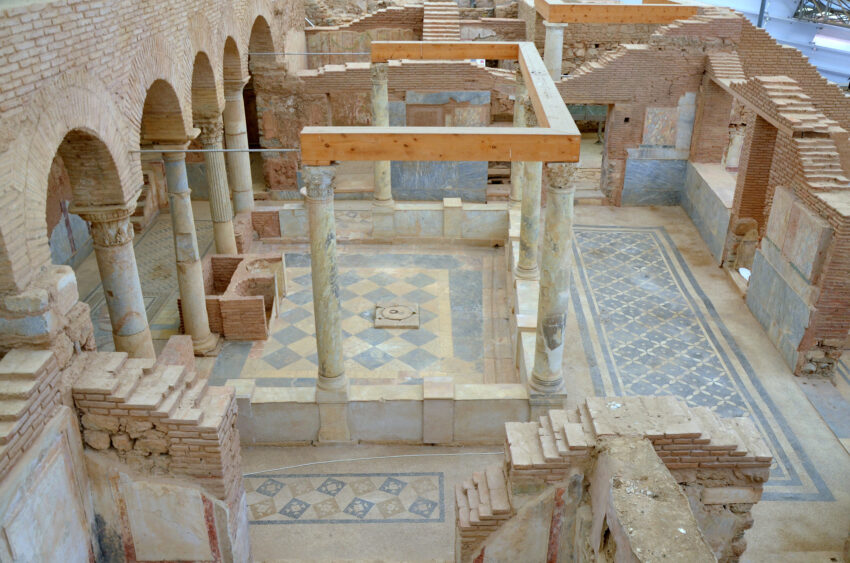
Source by Carole Raddato on Flickr – Under Creative Commons license
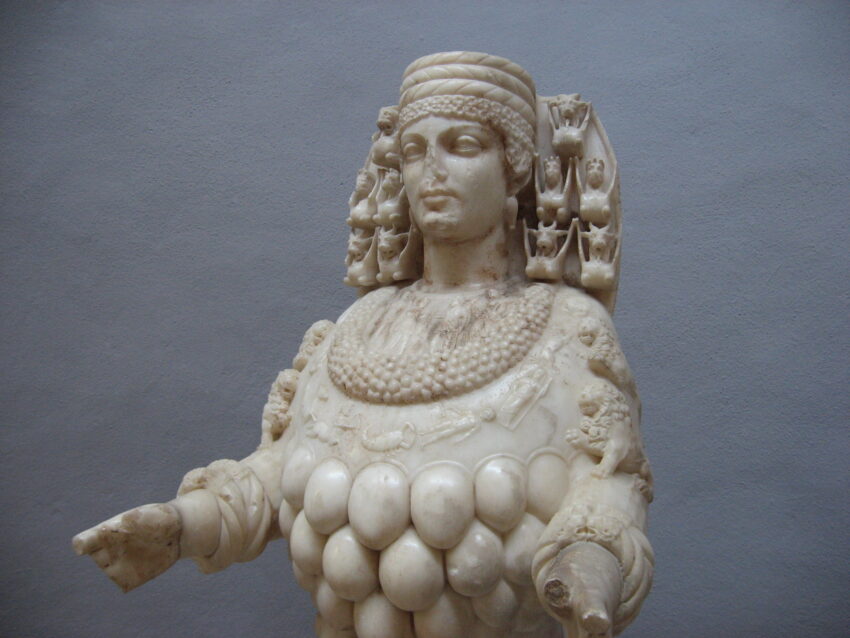
Source by Brad Hostetler on Flickr – Under Creative Commons license
Ephesus is, without a doubt, a relic of a city with ruins of classical Greek and Roman architecture. Its incredible amount of classical culture is embelished with that particular charm of its own. Certainly, this is a place that lovers of classical culture and architecture will adore.
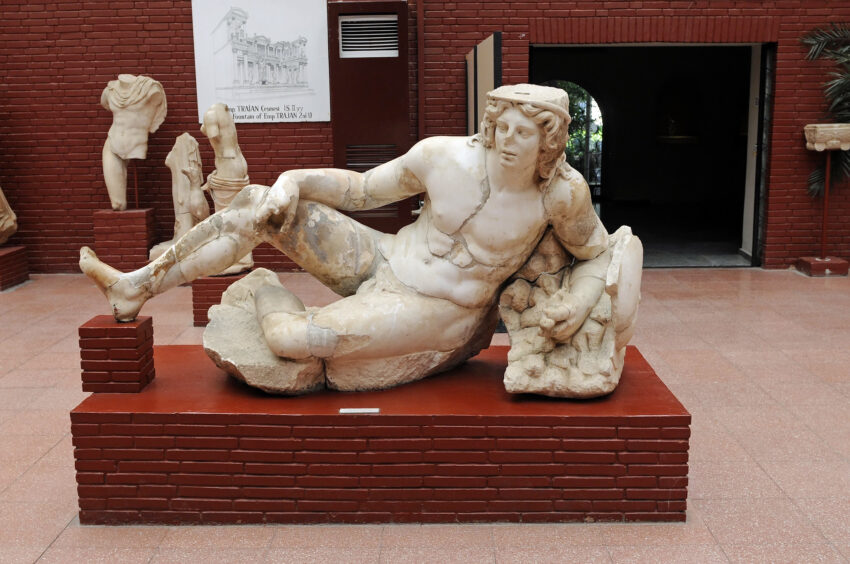
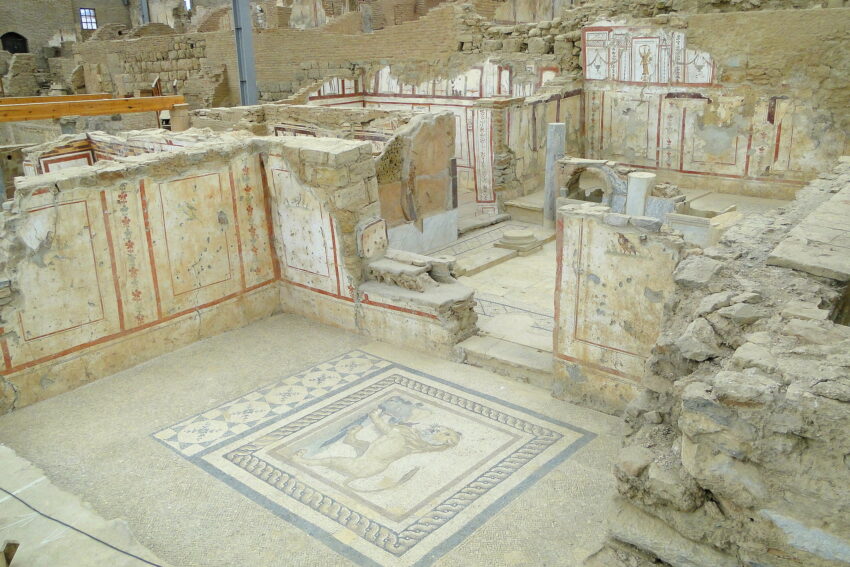
How to get there
At Izmir, you have the closest airport to Ephesus, 30km away from the town of Selçuk. You can visit the ruins from 8 a.m., before the summer sunrise hits them, to 7 p.m. But generally, you can wander around for another hour. On special events, the ruins are lit at night and you don’t want to miss this impressive sight. Don’t forget to ask if there are any events at the time of your visit. Also, I recommend that you stay in Selçuk, only 3km away from the ruins, at the Hotel Kalehan.
History
Ephesus was originally founded by the Greeks, who arrived around the 10th century BC. In those days, Ephesus was an enormous and very important city and seaport, with about 200,000 inhabitants. Later, in the 2nd century BC, the Romans took over the city and then it became an important center of Christianity. The Temple of Artemis, also known as Diana, was built during the Greek reign. This Temple was declared one of the Seven Wonders of the World.
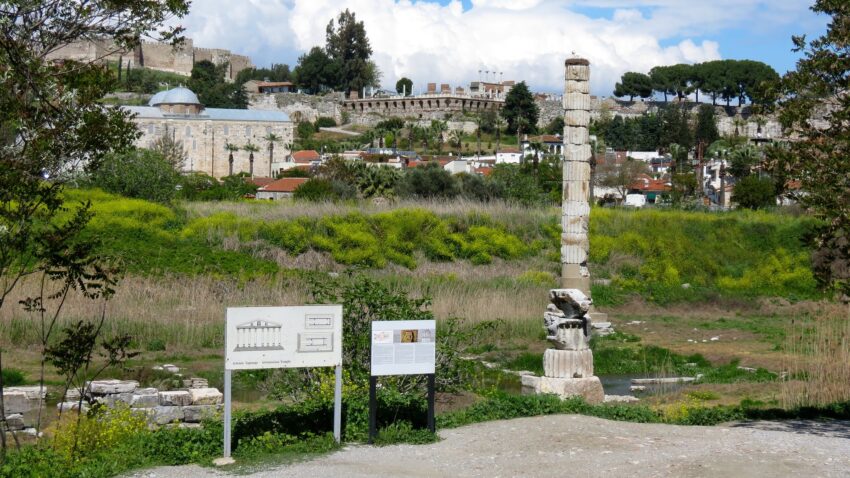
Source by Erik Cleves Kristensen on Flickr – Under Creative Commons license
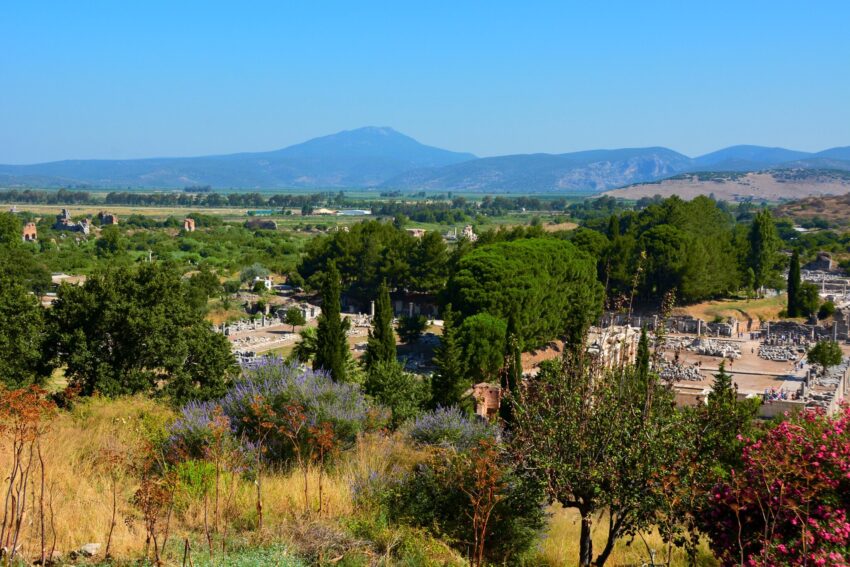
If you loved this article or found it useful, don’t forget to share it with your adventurous and travel-hacking friends! If you want more posts like this, follow us on Youtube, Instagram, Pinterest, Twitter or Facebook and subscribe to our newsletter!

